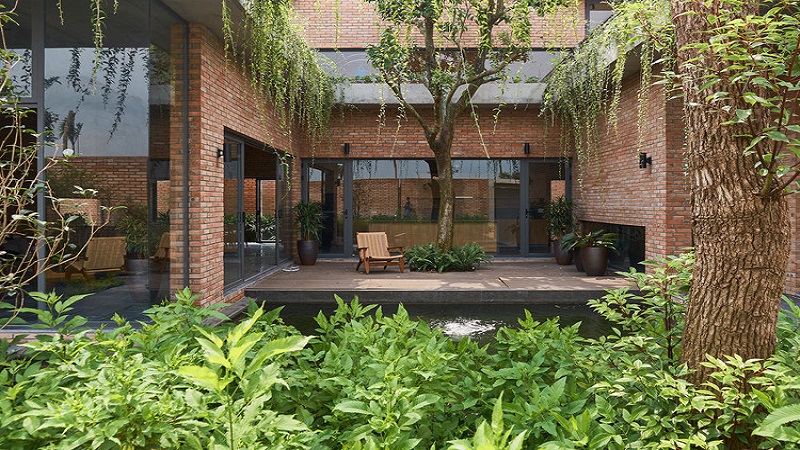Green building design focuses on optimizing space, enhancing accessibility, and minimizing environmental impact. While these principles often focus on energy efficiency and material selection, a less explored yet potent element can contribute to these goals: wall-mounted ladders.
Space Optimization
Modern architecture often needs more square footage. A wall-mounted ladder offers a revolutionary approach to space use. By replacing traditional, space-consuming staircases, they free up valuable floor areas. Architects and designers can transform this newfound space into extra living quarters, home offices, or versatile rooms.
Moreover, architects and designers can integrate wall-mounted ladders with loft-style designs. They can repurpose the space below the ladder into storage areas, home libraries, or cozy corners. This vertical expansion maximizes the building’s cubic footage without compromising its footprint.
Accessibility and Inclusivity
Green buildings are increasingly prioritizing accessibility. When designed thoughtfully, wall-mounted ladders can be valuable in achieving this goal. They can provide an alternative means of access to upper levels, especially in places with occupants who have mobility challenges.
Furthermore, these ladders can be incorporated into homes for families of different generations, offering flexibility for residents of varying ages and abilities. By providing an extra access point, wall-mounted ladders contribute to a more inclusive and adaptable living environment.
Sustainability and Environmental Impact
The environmental benefits of wall-mounted ladders are multifaceted. First, they reduce the material consumption associated with traditional staircases. Architects and designers can reduce a building’s energy use and carbon footprint by choosing these ladders.
The space efficiency gained through wall-mounted ladders can lead to smaller building footprints. This translates to reduced land consumption and a smaller ecological impact. Additionally, smaller buildings often need less energy for heating and cooling, further enhancing the building’s sustainability profile.
Design Considerations
While wall-mounted ladders offer many advantages, architects and designers must carefully consider design and safety. The ladder’s construction, materials, and installation method are important for ensuring its durability and security. Architects and designers must adhere to local building codes and safety regulations to guarantee the ladder’s structural integrity.
Another key factor is visual appeal. Wall-mounted ladders can be integrated into a building’s design and customized in materials, finishes, and style to complement the interior decor.
Applications
Many architects and designers can include wall-mounted ladders in their green building projects. For instance, wall-mounted ladders can transform small urban apartments into versatile living spaces, offering a modern and elegant solution. They can access sleeping lofts, create multifunctional areas, and hide storage.
Wall-mounted ladders also complement and enhance modern minimalism or industrial chic aesthetics. Custom designs can be made, but safety, space planning, and lighting are crucial. Small urban apartments can become functional, stylish, and efficient by incorporating these ladders.
Wall-mounted ladders blend style with function, optimizing space and energy efficiency in homes and businesses. These ladders free up space for larger windows, maximizing natural light and reducing artificial lighting needs. Open layouts with wall-mounted ladders also improve ventilation, reducing reliance on mechanical systems.
Architects and designers can use wall-mounted ladders for home offices or dining areas in residential spaces. In contrast, in commercial spaces, they can create extra display areas or storage without expanding the building’s footprint. Strategic ladder placement boosts energy efficiency and space, creating sustainable buildings.
The Future of Green Building Design
Wall-mounted ladders represent a compelling opportunity to elevate green building design to new heights. By optimizing space, enhancing accessibility, and reducing environmental impact, these ladders contribute to creating sustainable and livable environments. They offer a practical, elegant solution for architects and designers seeking green building innovations.
Architects and designers can demonstrate their dedication to environmental responsibility and human well-being by including wall-mounted ladders in their projects.
